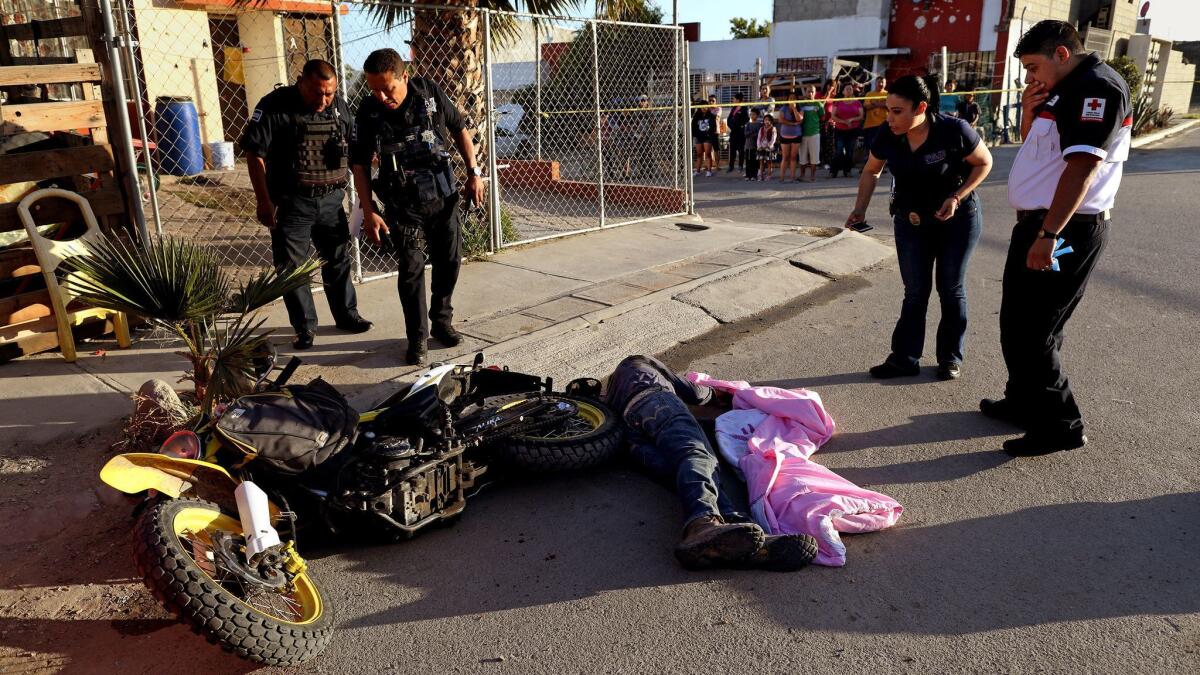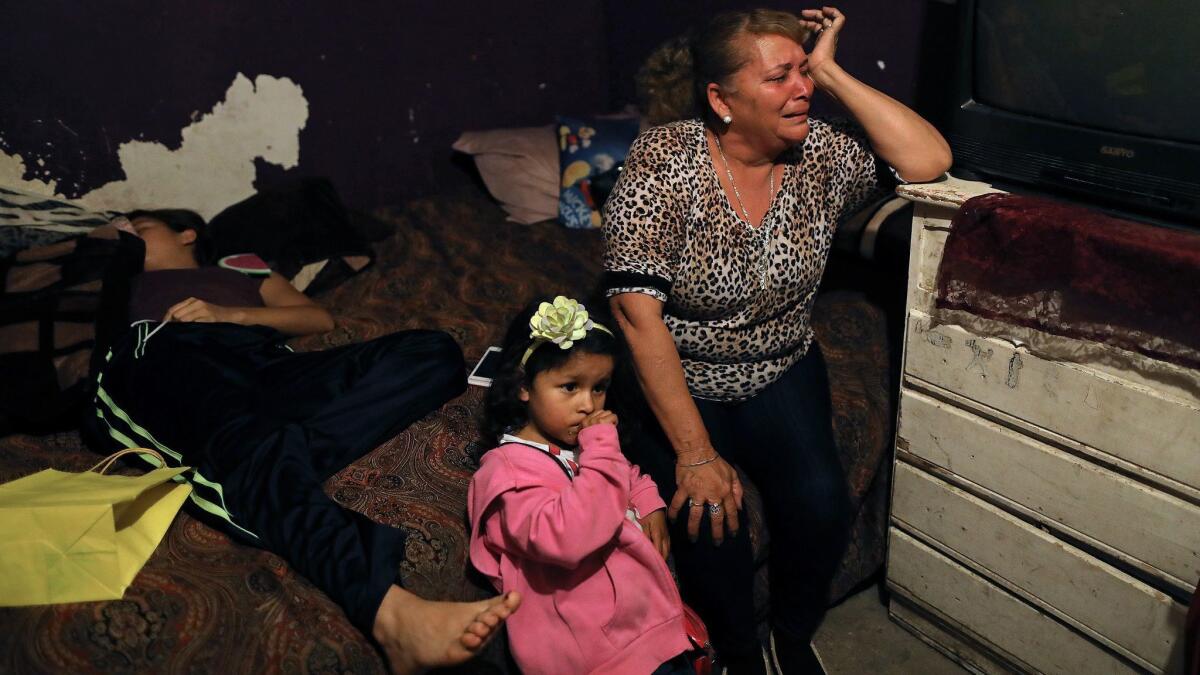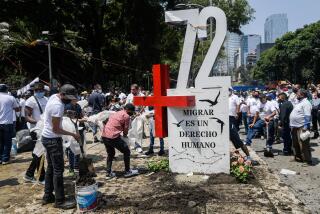Reporter’s Notebook: Behind the story: How The Times reported on Tijuana’s massive rise in homicides

Few people know the streets of Tijuana better than Margarito Martinez.
As a crime photographer for Zeta, one of the city’s most respected newspapers, he spends his days and nights steering a dusty minivan from one homicide to the next.
When The Times decided to explore an alarming increase in killings in Tijuana last spring, we launched our reporting by embedding with him, sometimes visiting three or four homicide scenes in the span of a few hours.
More than snapshots of grisly crimes, we wanted to understand what was driving the violence. So photographer Gary Coronado, videographer Jessica Chen and I began returning to the crime scenes, seeking out family members of victims who could explain what had happened. In a country where fewer than 1 in 10 homicides is solved, we couldn’t rely on the police.
Meth and murder: A new kind of drug war has made Tijuana one of the deadliest cities on Earth »
What we discovered through dozens of interviews is that Mexico’s long-standing drug war narrative — glorified for years in films and narcocorridos — was changing.
Small-time dealers were fighting and dying over the right to sell drugs in a growing local drug market, a dramatic shift from when the root cause of violence was powerful cartels battling for drug trafficking routes to the U.S.
The bloodshed bore more resemblance to gang battles over turf in Baltimore or South Los Angeles than it did to the sort of violence you see on the Netflix show “Narcos.”
Just after dawn on a cool morning in May, as mist still clung to the city’s densely built hillsides, we pulled up with Margarito to a typical homicide scene.
A man, Rafael Noriega Peña, had been killed in his home while his mother was sleeping a few rooms away.
Images from the front lines of Tijuana’s deadly drug war »
Rafael was a junkie who had gotten out of rehab a few months earlier. His family wasn’t sure exactly why he had been killed, but assumed it had to do with his addiction to crystal meth.
As night fell, we returned to the house, where Rafael’s friends and relatives had gathered and children were playing outside with crime scene tape. We knocked on the door. I’m not sure why, but they let us in. We sat down to talk in the kitchen.

There’s a common saying when authorities talk about violence in Mexico: Es entre ellos.
The phrase, which translates to, “It’s between them,” implies that the country’s bloodshed is playing out only between members of a criminal underworld — and isn’t touching everyday Mexicans.
It was clear, looking around the red-eyed people in that room, that Rafael’s killing had indeed touched many everyday Mexicans, and that his death was just as painful as the death of someone who had not used and likely sold drugs.
His relatives were distraught. They were angry.
“Why don’t the police do anything to stop this?” asked Tomas, Rafael’s younger brother, whose face was ashen after a day of dealing with police investigators and trying to calm his mother.
Months earlier, he had saved up his meager factory wages so Rafael could go to rehab. Now he was stressing out about how to find the $3,000 his family would need for a funeral.
A friend of the family arrived at the scene and silently dropped a plastic bag filled with tacos on the table. Tomas and his relatives unwrapped them and ate for the first time all day.
Twitter: @katelinthicum
More to Read
Sign up for Essential California
The most important California stories and recommendations in your inbox every morning.
You may occasionally receive promotional content from the Los Angeles Times.











